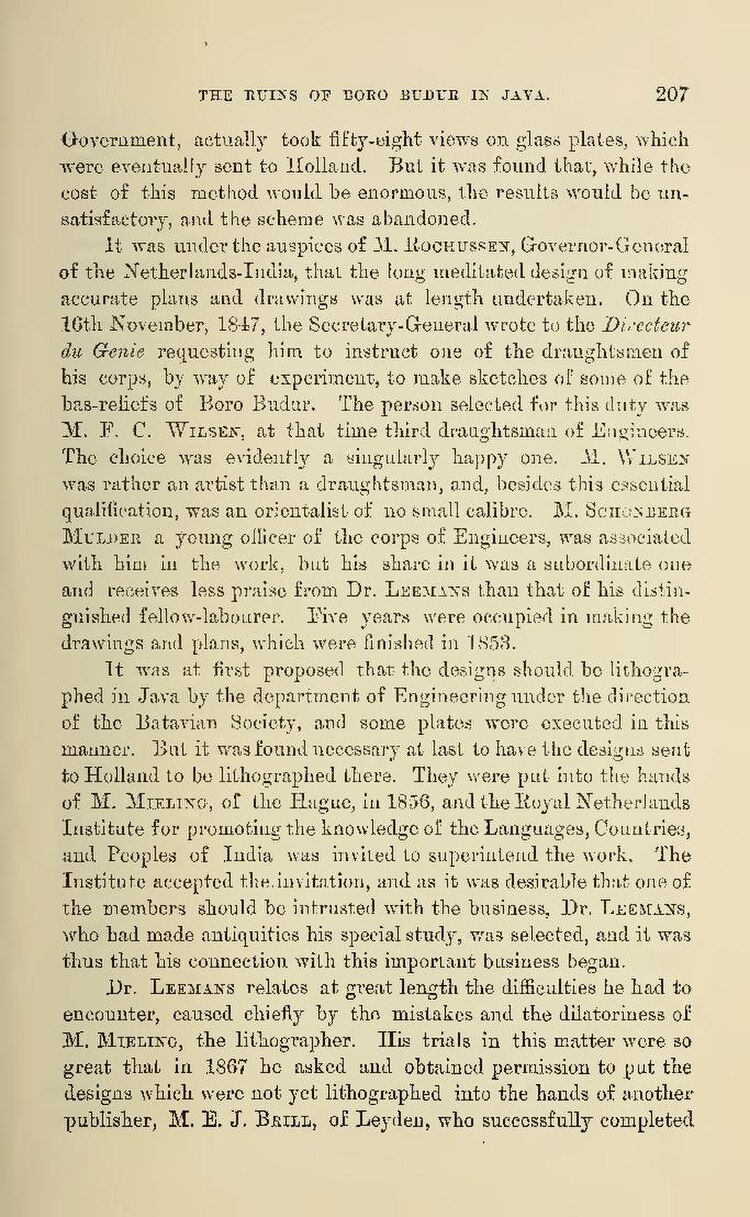Government, actually took fifty-eight views on glass plates, which were eventually sent to Holland. But it was found that, while the cost of this method would be enormous, the results would be un- satisfactory, and the scheme was abandoned.
It was under the auspices of M. ROCHUSSEN, Governor-General of the Netherlands-India, that the long meditated design of making accurate plans and drawings was at length undertaken. On the 16th November, 1847, the Secretary-General wrote to the Directeur du Genie requesting him to instruct one of the draughtsmen of his corps, by way of experiment, to make sketches of some of the bas-reliefs of Boro Budur. The person selected for this duty was M. F. C. WILSEN, at that time third draughtsman of Engineers. The choice was evidently a singularly happy one. M. WILSEN was rather an artist than a draughtsman, and, besides this essential qualification, was an orientalist of no small calibre. M. SCHONBERG MULDER a young officer of the corps of Engincers, was associated with him in the work, but his share in it was a subordinate one and receives less praise from Dr. LEEMANS than that of his distin- guished fellow-labourer. Five years were occupied in making the drawings and plans, which were finished in 1853.
It was at first proposed that the designs should be lithographed in Java by the department of Engineering under the direction of the Batavian Society, and some plates were executed in this manner. But it was found necessary at last to have the designs sent to Holland to be lithographed there. They were put into the hands of M. MIELING, of the Hague, in 1856, and the Royal Netherlands Institute for promoting the knowledge of the Languages, Countries, and Peoples of India was invited to superintend the work. The Institute accepted the invitation, and as it was desirable that one of the members should be intrusted with the business, Dr. LEEMANS, who had made antiquities his special study, was selected, and it was thus that his connection with this important business began.
Dr. LEEMANS relates at great length the difficulties he had to encounter, caused chiefly by the mistakes and the dilatoriness of M. MIELING, the lithographer. His trials in this matter were so great that in 1867 he asked and obtained permission to put the designs which were not yet lithographed into the hands of another publisher, M. E. J. BRILL, of Leyden, who successfully completed
